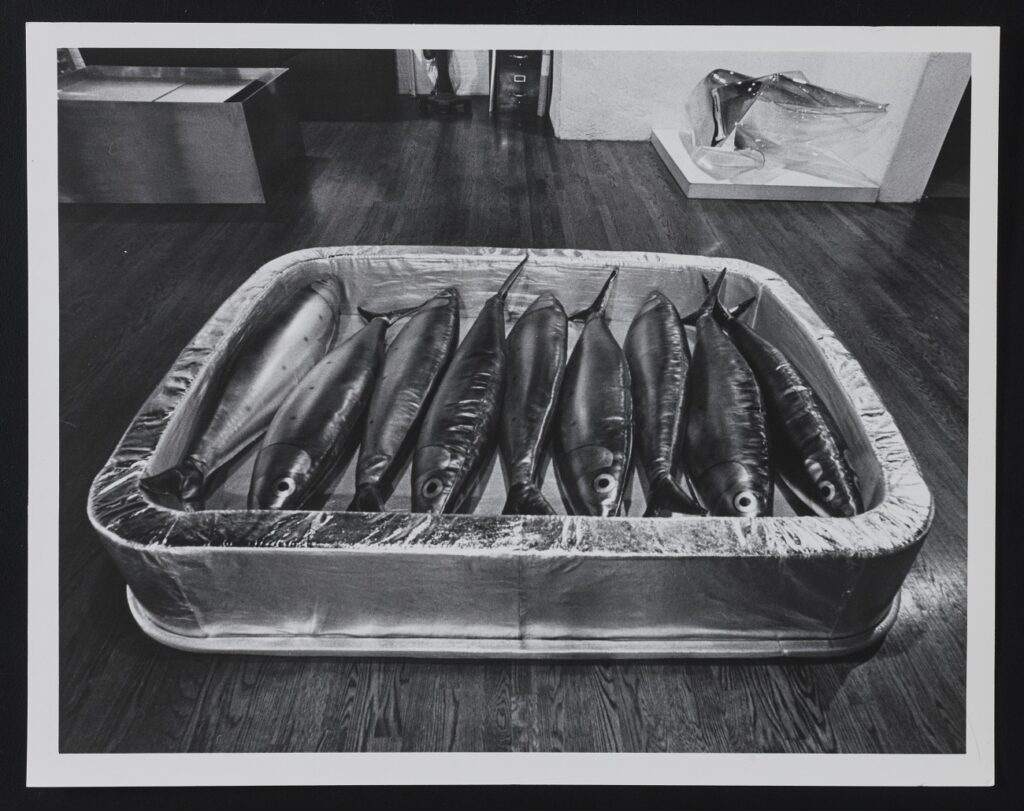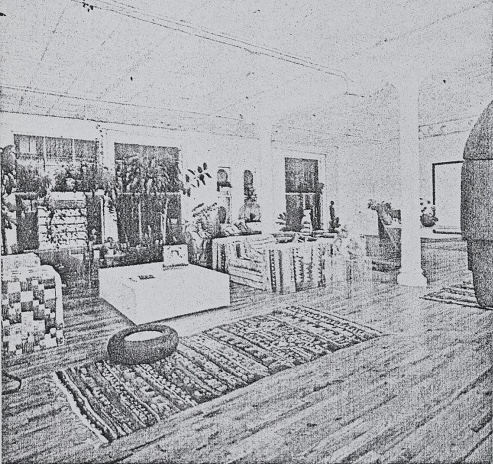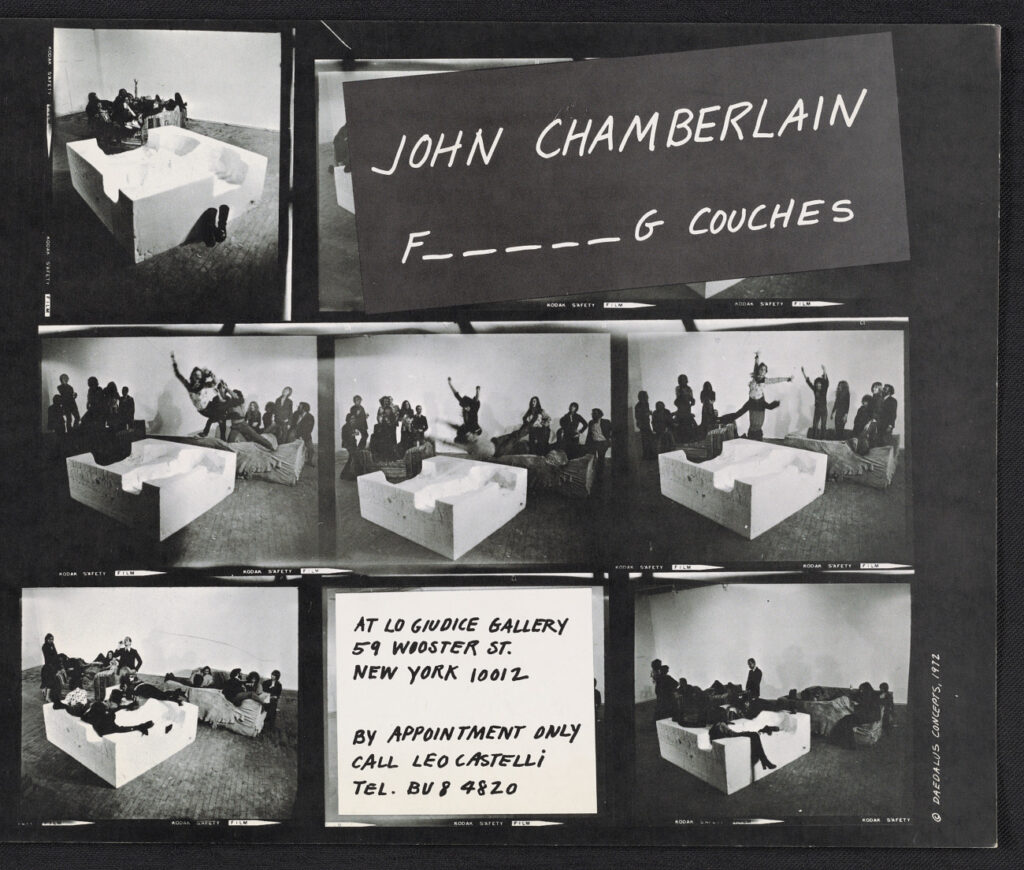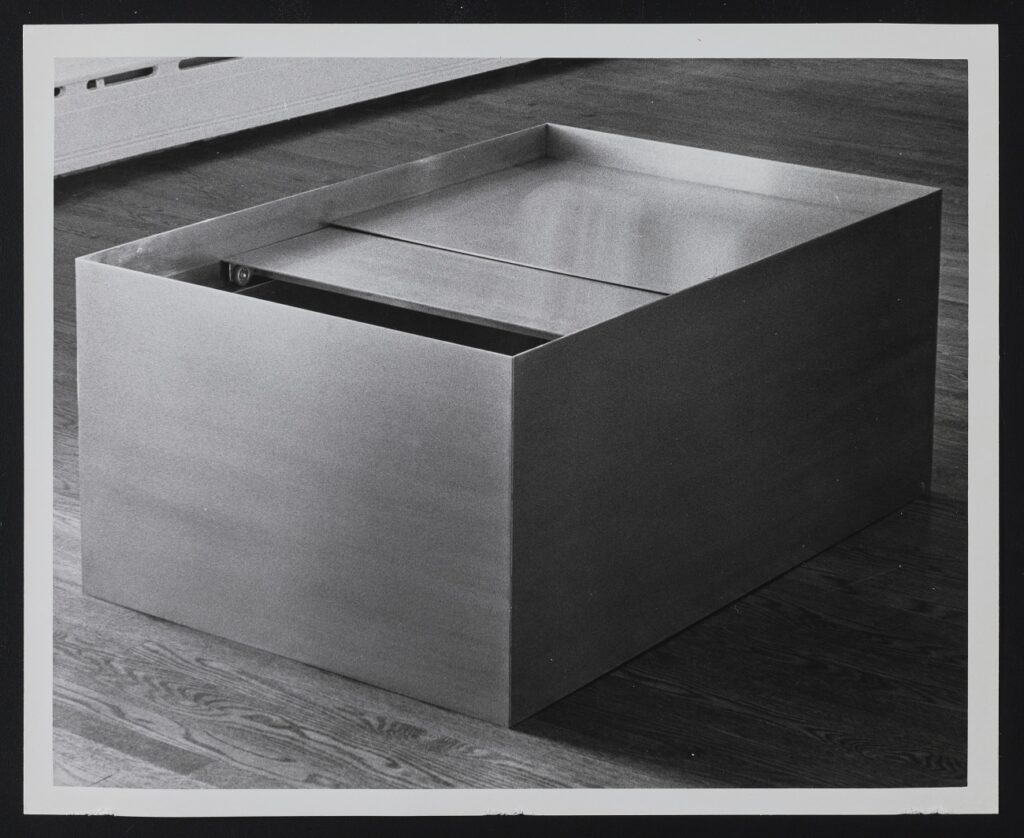Not everything is absolutely terrible.

For example, if I hadn’t gone to the Archives of American Art looking for information on Cy Twombly & Robert Rauschenberg’s two-artist show at Leo Castelli in 1974, I might not have found the September 1972 show at Castelli, Furniture Designed by Artists, which listed Twombly along with “Chamberlain, Judd, Lichtenstein, Morris, Stella [and] Warhol.”
TWOMBLY FURNITURE?? CLICK TO OPEN! Yeah so far, nothing, and the Warhol might be a Campbell’s Soup print on the wall. [Yeah, no, there is a typical Castelli invite for the show on ebay that lists six furniture artists: Chamberlain, Di Suvero, Judd, Lalanne, Rauschenberg, Charles Ross, and Gus Spear. Maybe everyone else was just art artists.]

But if I hadn’t clicked, I’d have definitely kept missing this Lalanne Sardine Bed. Which was a one-off, commissioned by the show’s organizer, Jane Holzer, of the Warhol Factory Jane Holzers, who at 31, had rebooted herself as an impresaria. Leo Castelli was apparently involved in her artist furniture startup Daedalus Concepts, which, except for the Times puff piece for this show, exists only in the provenance listings of of various John Chamberlain sofas.

I still can’t tell if anyone bought it for $4,000, but I’d never have known the Sardine Bed was put up for sale at Sotheby’s twice, once successfully, in October 2023. And that its silver-painted leather was subsequently being restored by bougie French shoemaker J.M. Weston, who posted a press release about it on their blog. [And that some Lalanne sardines have been sold separately, or with other silver-painted leather furniture.]

I would not have seen the Robert Rauschenberg Tire Lamp ($500) on the floor. Or the John Chamberlain foam sofa covered in quilt facing the Chamberlain foam sofa covered in kilim rugs ($1,500-4,000). I still don’t know what the Rauschenberg Water Table between the sofas, which is mentioned in the House Beautiful caption is about, but at least now I know it was there.

I’m sorry, I missed that. Did you say the John Chamberlain F_____g Couches? Now the Times’ mention of six smaller sofas, raw or with a variety of upholstery options, makes more sense. Calling Leo to get into LoGiudice Gallery two blocks away, though, makes less.
And I would have missed that other silver rectangle in the installation photo, the one in the upper left corner. The Donald Judd coffee table with a sliding top covering the storage compartment, which the Times says are “stainless steel,” “box-like,” and produced by the artist himself for “$3,000 each”. 1972.

And if you’ve watched Amie Siegel’s 2016 Dia lecture on Judd’s furniture a hundred times, turning to it often for Siegel’s measured voice to bring fact-grounded order to a spiraling world, you’d recognize that coffee table as the Judd ur-furniture. And you’d recall that it was unique, and dated to the “late 1960s,” and that Judd said he’d destroyed it because it didn’t work as furniture, or as sculpture. And that his next attempt at furniture was his own bed at 101 Spring St in 1970, and after that it was the kids’ beds in 1978.

But also that the supposedly unique, supposedly failed, supposedly destroyed coffee table turned up years later at auction, as perhaps an edition of three, with a date of 1970-71.
But nowhere in there would you have heard about the coffee table(s) he made and showed and offered for sale via Jane Holzer’s furniture business at Leo Castelli Gallery. This all could have seemed fine at the time, of course. It could have seemed fine when it was just one table, and a bed in your empty loft for you, and a bed in your empty divorced dad house for your kids. And as you got into it, and people started to ask questions or make assumptions, you gained new experience, perspective, you rethought, adjusted. This is a good thing. We should celebrate it.

And we should be able to have a conversation about you know what, this sculpture—you know the one, with the identical dimensions—does look a lot like this table, and vice versa, and hold those concepts in our mind. I did not realize until just now that it only came into the Modern’s collection in 1980, long after Judd’s table dilemma had played out. Could this acquisition have been a catalyst for the artist’s retconning?
